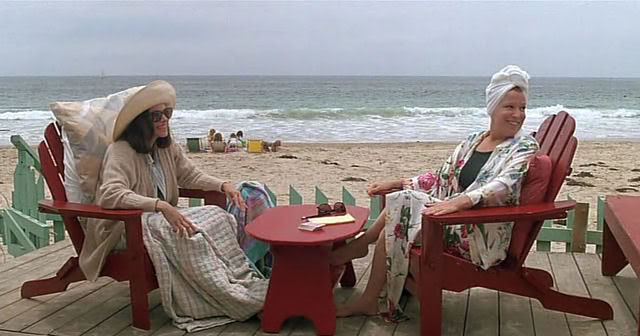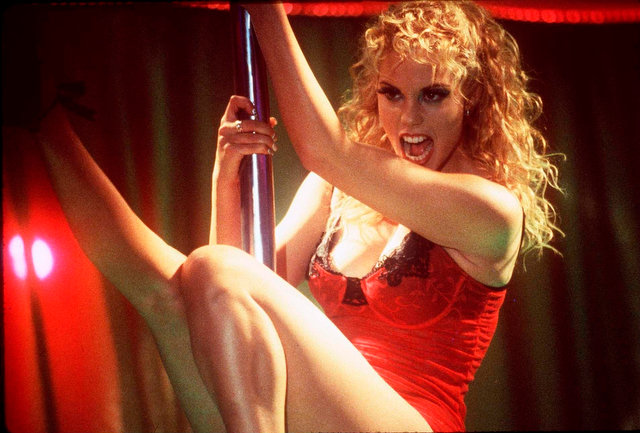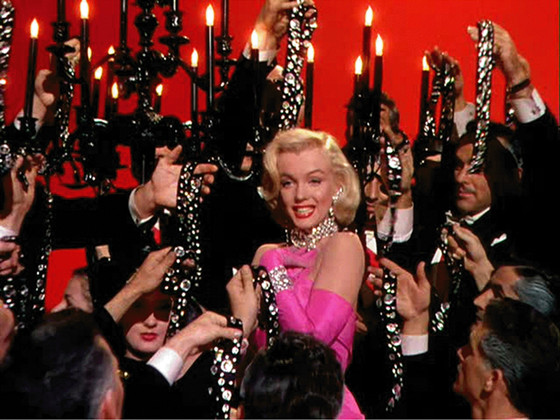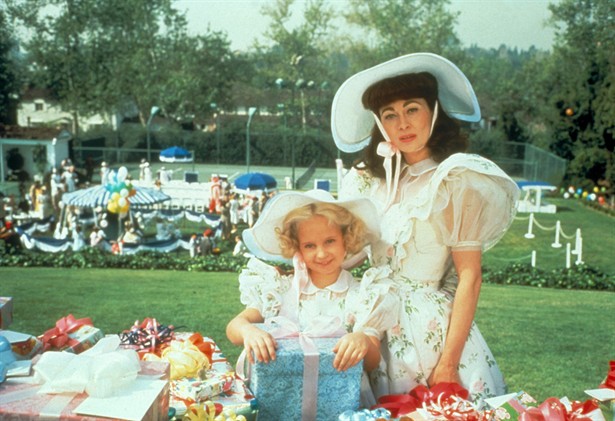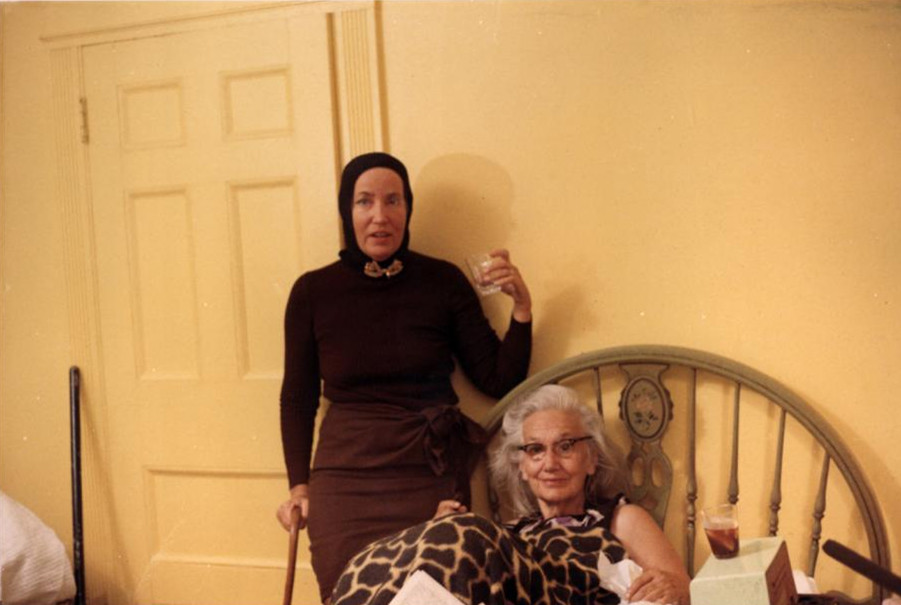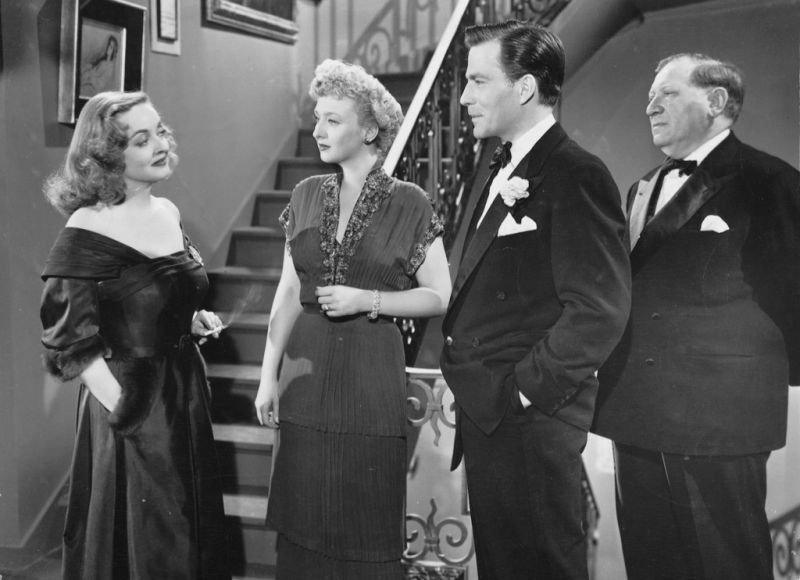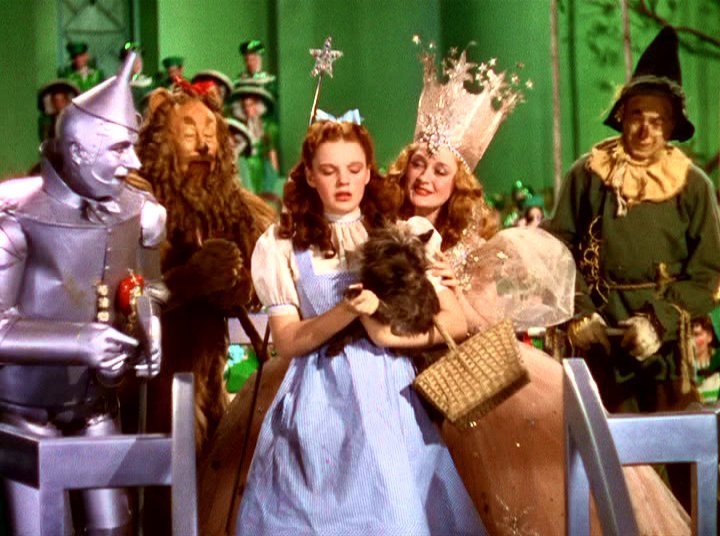8. Beaches (Dir. Gary Marshall, 1988)
C.C. Bloom (Bette Midler) and Hillary Whitney (Barbara Hershey) have a friendship that endures years of hardship. From the moment they meet at the New Jersey boardwalk to their feuds over men and success, C.C. and Whitney salvage their relationship and endure any further hardships that will come their way. That is until Hillary’s terminal heart condition makes the two realize that nothing lasts forever.
Bette Midler is a queer favorite because of her unconventional beauty, singing abilities, and campy humor. In Beaches, Midler turns C.C. into loud mouth chanteuse who gets by on her quick wit and humor. Hillary’s terminal illness may be a serious moment for the film, but it is also the perfect melodramatic setting for Bette Midler/C.C. Bloom to steal the scene by belting out the famous “Wind Beneath My Wings.”
7. Showgirls (Dir. Paul Verhoeven, 1995)
Nomi Malone (Elizabeth Berkley) is an aimless drifter who travels from city to city looking for new opportunities. She begins performing at the Stardust Casino where she meets (and eventual usurps the spotlight from) Cristal Connors (Gina Gershon). As Nomi’s star rises, she discovers that the top is filled with the same pigs that were at the bottom.
Paul Verhoeven and Joe Eszterhas’ attempt to create an “artsy” NC-17 film proved to be laughable as the film is anything but serious. Most of the actors are in on the joke, exaggerating their characters to ridiculous caricatures (Gina Gershon seems to be in on most of the joke, while Elizabeth Berkley earnestly wanted to create an adult reputation for herself outside of “Saved by the Bell”). You will never forget their most outlandish moments, including Nomi’s discussion of Versace (she pronounces it Ver-seis) and her rather explicit fish flopping sex scene in the pool.
6. Gentlemen Prefer Blondes (Dir. Howard Hawks, 1953)
Two showgirls, Lorelei (Marilyn Monroe) and Dorothy (Jane Russell), are looking for love in the form of wealthy husbands and well-built men. Though they search endlessly for the ideal man, you can’t help but feel that Dorothy is actually in love with Lorelei (Russell being more butch while Monroe is more femme) The cherry on top of the campy cake is Dorothy’s “Ain’t There Anyone Here for Love” number in which the man-hungry Dorothy eyes scantily clad Olympians, all of whom seem disinterested in her advances.
5. Mommie Dearest (Dir. Frank Perry, 1981)
Joan Crawford (Faye Dunaway) enjoys her Hollywood success, but she desperately wants a child. Using her lawyer boyfriend, Gregg Savitt (Steve Forrest), to secure a baby, she adopts Christina (later played by Diana Scarwid) and Christopher (later played by Xander Berkeley). Crawford presents the external image of maternal bliss while secretly torturing and mercilessly beating her children behind closed doors. As Christina and Christopher grow, they are still haunted by their menacing Mommie Dearest.”
While the book was a shocking scandal that brought about a revisionist image of Joan Crawford, the film took on an unintentionally comedic tone. Crawford’s outbursts (especially her “wire hangers” rant) coupled with the harsh makeup (especially the eyebrows) were so over the top that they have since found a place in pop culture. You can’t help but love Dunaway’s melodrama, especially when she strangles her daughter and yells at a board of directors about her commitment to Pepsi.
4. Grey Gardens (Dirs. Albert Maysles and David Maysles, 1975)
The Maysles turned their keen documentarian eyes toward Big Edie and Little Edie Bouvier Beale, a mother-daughter duo who live in the dilapidated Grey Gardens. Though related to Jacqueline Kennedy Onassis, their crumbling empire became a prison of delusions. The two women make fun of each other, but they truly rely on one another for support.
These former socialites proved to be one of the most entertaining documentary subjects, with Little Edie showcasing her avant-garde fashion, and Big Edie singing “Tea for Two.” It is a truly remarkable documentary that made unexpected icons of women who somehow created an artificial world for themselves.
3. All About Eve (Dir. Joseph L. Mankiewicz, 1950)
The ultimate camp tale of usurpation, Mankiewicz’s All About Eve follows Eve Harrington (Anne Baxter) as she charms – and ultimately steals the spotlight from – Margot Channing (Bette Davis). Ironically, it is Margot who steals the scenes with her stubborn attitude and her quick wit. Bette Davis would always play fierce characters, but her Margot Channing was truly one for the books. With a puff of her cigarette and a drink of her martini, she could command your attention and make you root for her to overthrow the conniving Eve.
2. The Wizard of Oz (Dir. Victor Fleming, 1939)
Essential viewing for queer audiences, The Wizard of Oz is the timeless tale of Dorothy (Judy Garland) who is transported to Oz via a tornado. After killing a witch and stealing a pair of ruby shoes, Dorothy goes to the Emerald City to see if the Wizard can transport her back home.
It is the ultimate tale of artificial worlds. The young Dorothy is transported to rainbow colored paradise of her making (the film implies that she may have created the world after she hit her head). Glinda the Good is alright, but I identified more with the Wicked Witch of the West, whose determination and homicidal attempts to get a ruby pair of pumps is admirable.
1. Whatever Happened to Baby Jane? (Dir. Robert Aldrich, 1962)
Baby Jane Hudson (Bette Davis) enjoyed success as a child star, but her celebrity began to wane as she attempted to transition into films. Her sister, Blanche (Joan Crawford), enjoyed success as a celebrity, until a car accident involving Jane lead to Blanche’s paralysis from the waist down. Their golden years are acrimonious, with Jane torturing Blanche at every chance she gets. The acrimony soon leads to homicide, and the infantile Baby Jane has to rely on her sister (whom she has kept bound and gagged in a room) to get her out of the mess.
When you have a film that stars two titans like Bette Davis and Joan Crawford, you have to turn them into bitter rivals (I honestly could not conceive a film where the two women are friends, their personalities would inevitably clash). They play parodies of themselves, becoming aging actresses who look upon their earlier years with vodka-soaked glasses. Bette Davis, draped in a baby doll dress and white face paint, steals the show as she bellows out her creepy tune, “I’ve Written a Letter to Daddy.” It is a gem of a film, and if you see it in a theater full of gay men (like I did), prepare for a night of audience participation.
